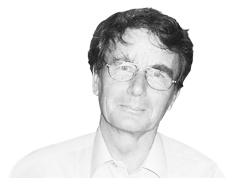About the Speaker

Hans Meinhardt works at the Max Planck Institute for Developmental Biology in Tübingen, Germany; since 2003 as Emeritus. He studied physics in Cologne and Heidelberg. After his PhD he worked for two years at CERN, the European High Energy Laboratory near Geneva, where he learned to use computers for modeling complex systems. Since 1969 at the Max-Planck-Institute, his interest moved towards biological problems. In part together with Alfred Gierer he developed molecular feasible models for essential steps in the development of higher organisms. Several of these models have now found direct support in molecular and genetic research.
Turing's Pioneering Paper 'The Chemical Basis of Morphogenesis' and the Subsequent Development of Theories of Biological Pattern Formation
In his pioneering work Alan Turing has shown that de-novo pattern formation is possible if two substances interact that differ in their diffusion range. Later we have shown that pattern formation is possible if and only if a self-enhancing reaction is coupled with an antagonistic process of longer range. Knowing this crucial condition has enabled us to include non-linear interactions, which are required to design molecularly-realistic interactions. Different reaction schemes and their relation to Turing's proposal are discussed and compared with more recent observations on the molecular-genetic level. An almost forgotten part of Turing's paper deals with three-component systems that allow the generation of time-dependent spatial patterns that never reach a stable steady state. In contrast to Turing's expectation, it will be shown that these patterns play a crucial role in very different biological situations.